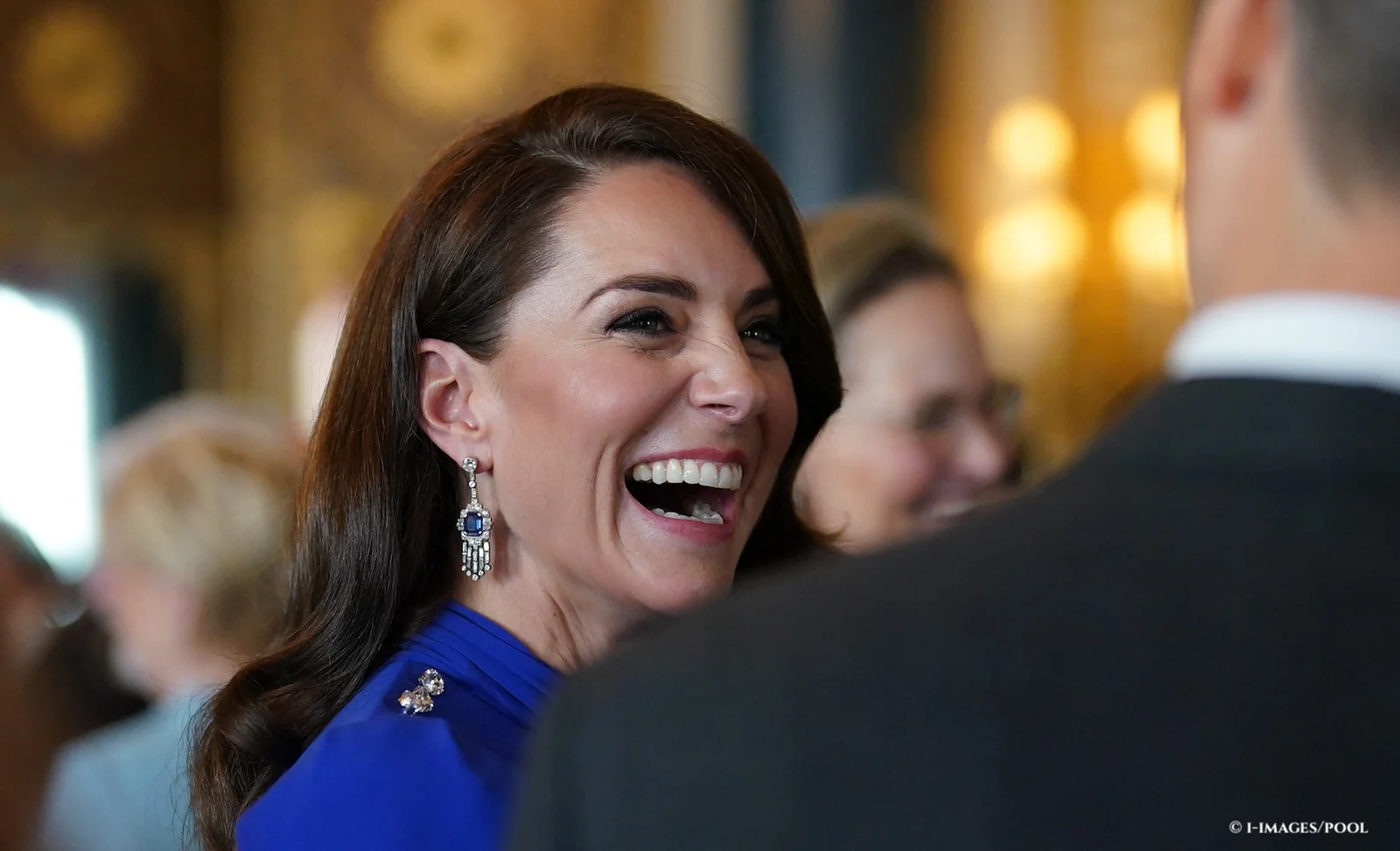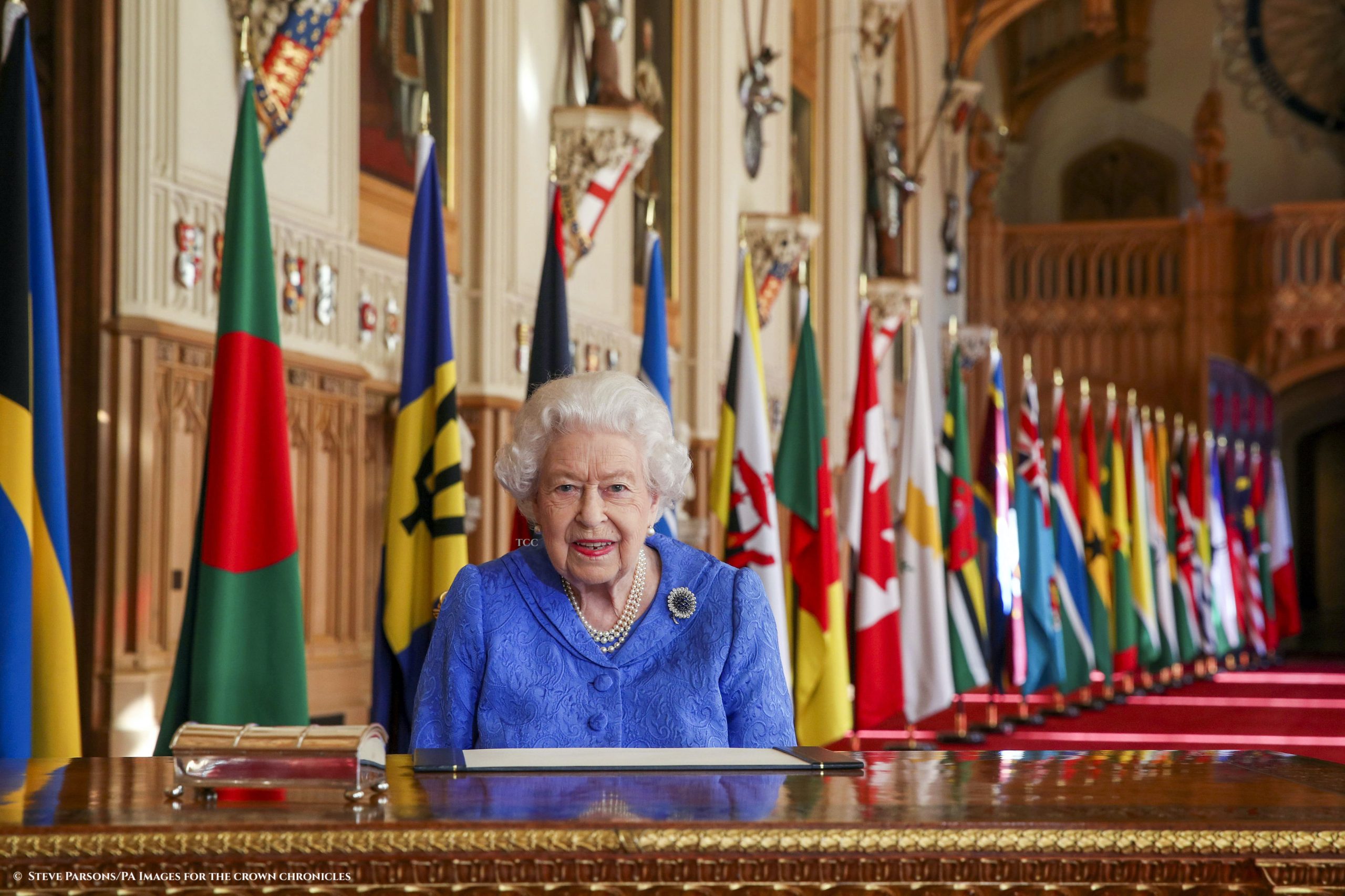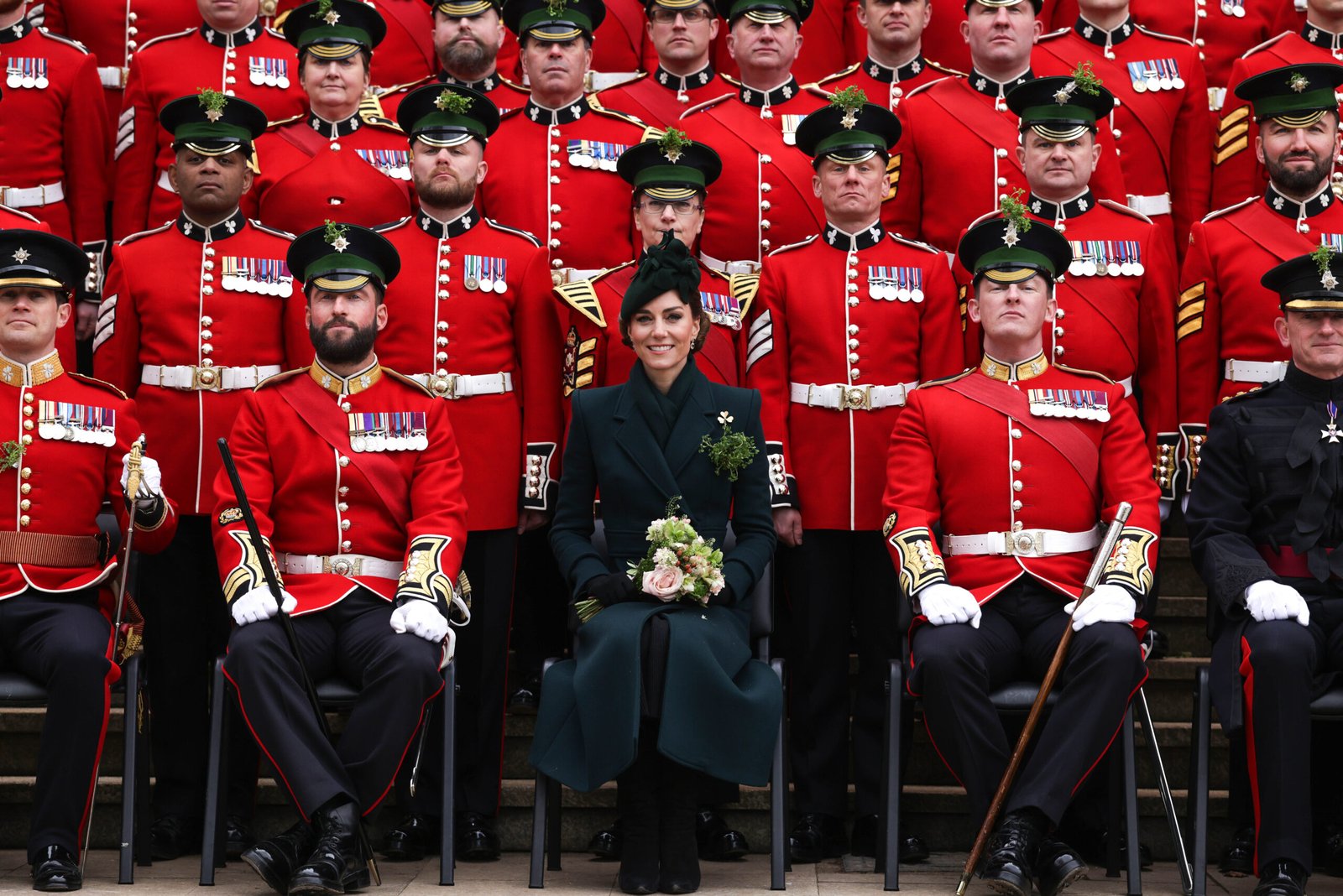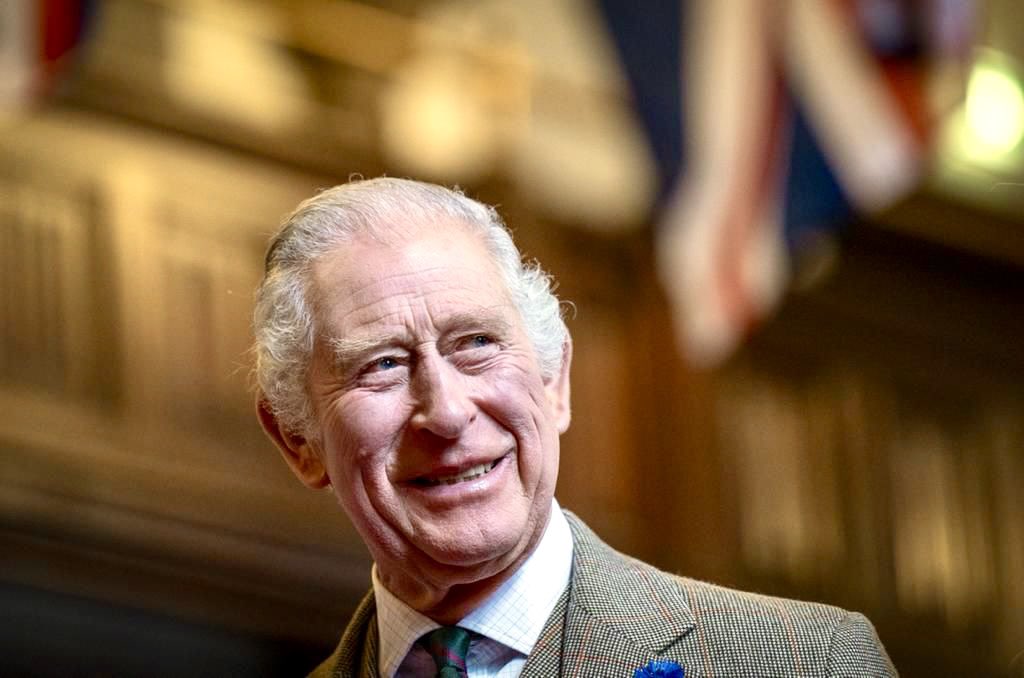Twice a year a list of the recipients for various honours are released by Buckingham Palace, often including celebrities, but also normal people who have done extraordinary things. So what’s the difference between an MBE and OBE? Why would you receive one? Is a knighthood a more prestigious award to receive?
What is the honours system in the UK?

Investitures for honours such as MBEs, OBEs and CBEs take place at Buckingham Palace and Windsor Castle throughout the year. Stephen Lock / i-Images)
The honours system is a way of giving recognition to those who have made achievements in public life – such as sport, music or acting – or committed themselves to serving and helping Britain and its people, such as charity volunteers.
The most common honours we know today are part of the Most Excellent Order of the British Empire; they were created by George V in 1917 as a way of rewarding civilians and servicemen for their contribution to the war effort. This year the awards are celebrating their centenary.
Who decides who receives an honour?
A person is nominated for their work or achievements. Anyone can choose to put a name forward for consideration, be it a family member, friend, colleague or coach. These names are then reviewed by an official honours committee. The committee is made up of senior civil servants as official members, while the majority are independent members, usually experts in their field. These people also decide which honour would be most appropriate to bestow upon the nominee, be it a knighthood, or OBE etc. (You can view the names of all members of the committee for each section here.)
Approximately 1300 people are recognised in each list – the New Year’s honours list and one for The Queen’s birthday in June.
The final preparations are made before The Queen holds today’s #Investiture ceremony at Buckingham Palace pic.twitter.com/KwCxT56pvf
— The Royal Family (@RoyalFamily) March 1, 2016
The committee’s decisions are then forward to the Prime Minister and then to The Queen, who will often award the honour. Prince Charles, Princess Anne and Prince William all help in this duty for the ceremonies, which take place at Buckingham Palace and Windsor Castle a few times a year. These are organised by The Central Chancery of the Orders of Knighthood at St James’s Palace.
Know someone worthy of such an honour? Nominate them here.
What awards can you receive? What is an OBE?
Those who have been nominated can receive various honours in this way. These are to become: a Companion of Honour (an order in its own right), a Knight or Dame, a CBE, OBE, or MBE, a member of the Royal Victorian Order, a member of the Order of St Michael and St George, or to receive a British Empire Medal. These other orders will be discussed in a further article.
Awards are presented by either The Queen,The Prince of Wales,The Duke of Cambridge or The Princess Royal #Investiture pic.twitter.com/f6TpujsBlF
— The Royal Family (@RoyalFamily) March 6, 2015
Admission to the Order of the British Empire (CBE, OBE, or MBE) is the most common, with five ranks:
- GBE
- KBE/DBE
- CBE
- OBE
- MBE
to order them. The Companion of Honour ranks above this, while a British Empire medal is below, with a Knighthood in the middle.
The Most Excellent Order of the British Empire
The Order’s motto is: For God and the Empire, and Prince Philip is the Order’s Grand Master.
Descending in grade (rank of seniority):
Knight/Dame Grand Cross of the Most Excellent Order of the British Empire (GBE) – for a pre-eminent contribution in any field of activity, often at a national level. Members are limited to 300, but only 16 have been awarded since 2000, such is the rarity of this honour. It is the highest rank in the Order of the British Empire. You may then use ‘Sir’ or ‘Dame’ before your name, or if you already hold a title (e.g. clergymen), put the designation ‘GBE’ after.

A GBE – Knight Grand Cross of the Order of the British Empire – cropped (British High Commission in New Delhi)
The medal or ‘badge’ to give it its official name, is the blue enamel CBE medal for the neck (male) or chest (female), accompanied by an eight-point star badge with an image of George V and Queen Mary at its centre, surrounded by the order’s motto.
Knight/Dame Commander of the Order of the British Empire (KBE/DBE) – again, awarded for a pre-eminent contribution in any field of activity. Also quite rare, generally seen being given to those in diplomatic service. Limited to 845 members, you may use ‘Sir’ or ‘Dame’ as above. Foreign recipients who do not have The Queen as their Head of State use the post-nominal letters and cannot be titled ‘Sir’ or ‘Dame’ e.g. Bill Gates.
Their medal is a blue enamel cross for the neck or chest (male/female) with a star badge, in a slightly different style to that above.

A Dame Commander of the Order of the British Empire badge and star (Stephen Lock / i-Images)
The Queen tells Kristin Scott Thomas: Playing me will be quite a challenge. #investiture http://t.co/n6Q0ILLbHV pic.twitter.com/hmpEIPlbhO
— HDTVNEWS (@HDTVNEWS1) March 19, 2015
Wives of Knights may prefix ‘Lady’ to their surnames (e.g. Lady Jones) but no equivalent privilege exists for husbands of Knights or spouses of Dames.
Knight Bachelor – not part of the Order of the British Empire, but it ranks lower than a KBE/DBE and higher than a CBE. A knighthood is awarded for public service. This is what is meant when we use the general term of ‘knighthood’, which allows to recipient to be called ‘sir’, but there are no post-nominal letters as with the other awards.
The female equivalent does not exist, and so a woman would be made a DBE instead – technically a higher award. This honour is a lot older, from the Henry III in the 13th century.

A Knight Bachelor (knighthood) medal (Stephen Lock / i-Images)
The medal is oval-shaped with the image of a sword through the centre and stirrups to the side.
Commander of the Most Excellent Order of the British Empire (CBE) – awarded for having a prominent but lesser role at national level, or a leading role at regional level. You can also get one for a distinguished, innovative contribution to any area. This is limited to 8960 members. You may then use ‘CBE’ after your name and wear your blue enamel neck medal (for men) or chest medal (for women) at appropriate times.

A CBE award (i-Images / Pool)
Officer of the Most Excellent Order of the British Empire (OBE) – awarded for having a major local role in any activity, including people whose work has made them known nationally in their chosen area. You may then use ‘OBE’ after your name, and the medal, worn on the chest, will be gold.

An [female] OBE award – the middle rank of the honours (Marcusjb1973)
Member of the Order of the British Empire (MBE)– awarded for an outstanding achievement or service to the community. This will have had a long-term, significant impact and stand out as an example to others. It is the ‘entrance’ or lowest rank of the order, and allows you to use ‘MBE’ after your name; the medal is silver.

An MBE award, the lowest ranking honour to receive (MickBakerrooster)
British Empire Medal (BEM) – awarded for a ‘hands-on’ service to the local community. This could be a long-term charitable or voluntary activity, or innovative work of a relatively short duration (three to four years) that has had a significant impact. It was scrapped in 1993, but revived in 2012 to coincide with The Queen’s Diamond Jubilee. This is given to those not eligible for the other awards, and is a lower ranking honour. You can put ‘BEM’ after your name with this award.
The medal – nicknamed the ‘Gong’ – features Britannia surrounded by the motto, with the words ‘For Meritorious Service’ at the bottom.

A British Empire Medal is also part of the honours system (Kingston University)
Anyone who receives an honour can have a ‘device’ added to their coat of arms which shows their membership of the Order of the British Empire. Every four years, the Order has a religious service at its spiritual home of St Paul’s Cathedral, when Knights and Dames Grand Cross are invested – not in the usual investiture ceremonies. One took place last year (2016).
Some have bemoaned the reference to ‘the British Empire’ in the name of the honours, and so there has been discussion around changing this to ‘British Excellence’.
Can you turn down an honour?
You may decline to receive an honour if you wish, though it is generally rare. A few famous names have refused, including Stephen Hawking, who turned down a knighthood, while painter L S Lowry turned down an MBE, an OBE, a Companion of Honour (twice) as well as a knighthood. John Lennon accepted his MBE in 1965 but returned it in 1969, in political protest.
Honours can not be given posthumously – Stephen Sutton, the teen who raised millions for the Teenage Cancer Trust in his final weeks of life, accepted his MBE shortly before his death in 2014. His mother, Jane, picked up the award on his behalf.
Do you know anyone who has received such an honour?






3 comments
Well ive tried to send a message thanking the Princes for the special programme on the tv last night. It was very moving and a credit to them
Johnny johnson`s MBE was the lowest of this group of awards…….He should have ben knighted.
I was Honered to RECEIVE an mbe in the QUEENS BIRTHDAY honOrs of 2001. My QUESTION is.:- at any one time how many mbes are there?